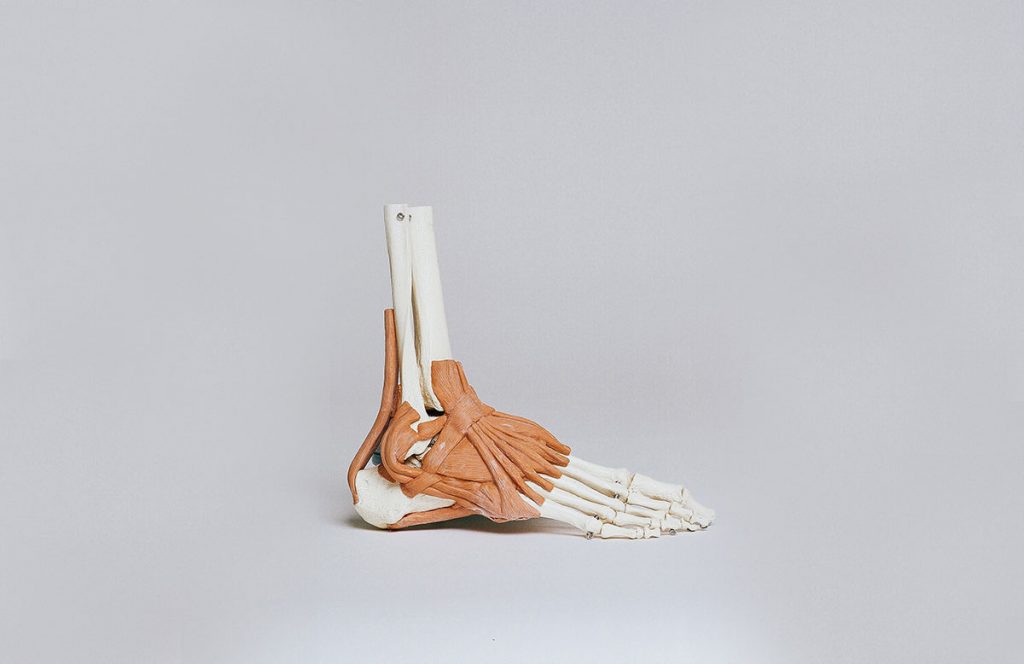Do I Have Ankle Arthritis? Signs, Symptoms and Treatments
No matter whether you’re suffering from chronic or acute ankle pain, the affect joint pain can have on your everyday life cannot be overstated. While there are a host of reasons you may be experiencing ankle pain – such as injury, overuse or gout – one of the most common causes is ankle arthritis.

What is Arthritis?
The simplest definition of arthritis is “joint inflammation.” A general term for more than 100 different diseases, arthritis causes pain, stiffness and swelling in and around joints. While osteoarthritis – the most common type of arthritis in adults – is typically associated with aging, factors such as genetics, injury, obesity, joint shape and joint alignment can all play a role in arthritis.
Both acute and chronic arthritis cause progressive joint deterioration, in which bones begin to rub against each other as the soft tissue and cartilage that cushion joints wear down. Ultimately, arthritis can cause loss of joint function, limited motion and joint deformities.
While there is no known cure for arthritis, there are treatment options that can slow the progress of the disease, help manage your pain and keep you doing the activities you love.
Ankle Arthritis Signs and Symptoms
Because the symptoms of ankle arthritis can vary greatly from person to person, it is best to see an ankle specialist to properly diagnose your ankle pain. Symptoms of ankle arthritis tend to develop over time, however sudden onset of acute pain can occur.
The most common signs of ankle arthritis are:
- Tenderness or pain in the ankle joint or pain when pressure is applied to the joint
- Stiffness or swelling in the ankle joint
- Pain with motion or vigorous activity
- Warmth or redness in the ankle joint
- Increased swelling and pain in the morning or after sitting
While the foot contains 28 bones and more than 30 joints to provide for a wide range of motion, the ankle joint is made up of only three bones. The ankle joint and many of the joints in the foot join the ends of bones together, where they are cushioned by articular cartilage. This cartilage keeps the joint bones from rubbing against each other and a thin lining called the synovium provides lubrication to the cartilage. Ankle arthritis causes the deterioration of this cartilage, which can cause the above symptoms.
Ankle Arthritis Treatment
As mentioned before, there is no cure for arthritis, but there are nonsurgical and surgical treatments that can help relieve symptoms and provide for a more normal lifestyle.
Nonsurgical Ankle Arthritis Treatment
Lifestyle Changes
- Losing weight can relieve excess stress on the ankle joint, reduce ankle pain and increase function.
- Changing your exercise routine from high-impact activities, such as running or basketball, to lower-impact activities, such as biking or swimming, can help reduce stress and aggravation to the ankle joint.
Physical Therapy
Working with a physical therapist, in conjunction with an ankle specialist or an arthritis specialist, can help you strengthen the muscles around the ankle joint and increase your ankle’s flexibility and range of motion.
Medications
NSAIDs (nonsteroidal anti-inflammatory drugs), like naproxen and ibuprofen, are commonly prescribed by arthritis specialists to help manage the pain and inflammation caused by ankle arthritis. In some cases, localized cortisone injections can be very effective in providing temporary pain relief.
Surgical Ankle Arthritis Treatment
Unfortunately, nonsurgical treatments for ankle arthritis aren’t always enough to relieve pain or resolve a disability caused by severe arthritis. For some patients, a discussion with an ankle surgeon is the best course of action. The following are common surgical treatments for ankle arthritis.
Arthroscopic Debridement
Often helpful in the early stages of ankle arthritis, this surgical procedure is done with miniature surgical instruments guided by a small camera called an arthroscope. While this procedure is helpful in removing loose bone spurs, inflamed synovial tissue and loose cartilage from around the ankle joint, it can hasten joint deterioration by allowing for increased motion that wears down the remaining cartilage.
Arthrodesis (Ankle Fusion)
An ankle surgeon may recommend an ankle fusion, which fuses the joint bones together to help reduce pain by limiting motion in the ankle joint. Similar to treating a broken bone, during an ankle fusion an ankle specialist will stabilize the joint bones with pins, plates, screws or rods to encourage the bones to fuse together as they heal. This effectively removes the joint – which removes the pain caused by movement in the joint.
Arthroplasty (Total Ankle Replacement)
Not as common as knee or hip replacements, total ankle replacements are now a practical option for people who require a new joint. In an ankle replacement, an ankle surgeon removes the bones and cartilage in the ankle joint and replaces it with a new plastic or metal joint that can reestablish pain-free function in conjunction with physical therapy.
If you are experiencing ankle pain, ankle arthritis or any other joint issues, please contact an ankle specialist for proper diagnosis and treatment.
Leave a Reply